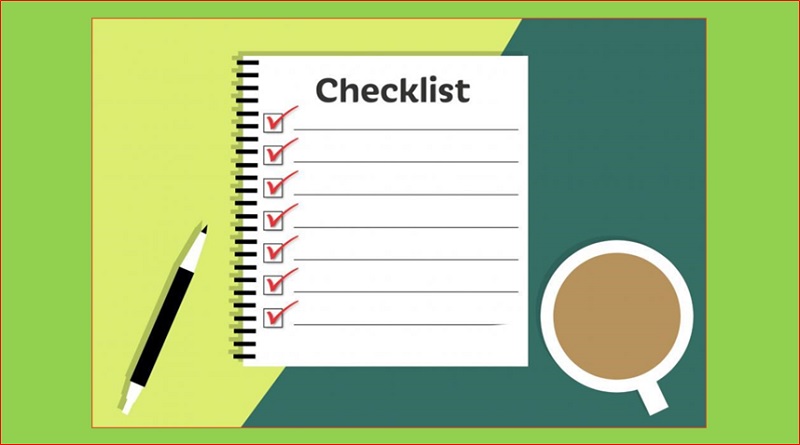Reinventing Web Design: Grapes Studio Lets Small Businesses Build Sites in Minutes
On-Page SEO Checklist for Beginners

We were able to successfully reach 100,000 visitors per month on an affiliate website with 70% commercial material and 30% informational content by using this On-Page SEO Checklist.
For your website to appear higher in Google and other search engines, you must focus on your on-page SEO. This is why we’re going to talk about the official checklist you should remember if you want to make sure that your website is showing up as high in the Google Search results as possible.
Here’s a checklist of the most important On Page SEO factors:
1. Title tags
When someone visits your website, the title tag is the first thing they see. It ranks among the most crucial components of on-page SEO.
Your title tag should be:
- Unique and descriptive
- No more than 60 characters long
- Relevant to your content
- Optimized for your target keywords
2. Meta Descriptions
The brief text that follows your title tag in the search results is known as the meta description. Although it has no immediate impact on your rankings, it is nevertheless a crucial component of on-page SEO.
Your meta description should be:
- Under 155 characters long
- Relevant to your content
- Optimized for your target keywords
3. H1 Tags
The second-most significant on-page SEO component is the H1 tag (after the title tag). At the top of your website, there is a big, bold typeface. Include your goal keywords here because Google gives words that occur in H1 tags greater weight.
Your H1 tag should be:
- Relevant to your content
- Optimized for your target keywords
4. Keyword Density
The ratio of the number of times a term occurs on a page to the total number of words on the page is known as keyword density. Although there is no ideal level of keyword density, aiming for 1-2 percent is a reasonable starting point. This means that if your content is 1000 words long, your target term should appear no more than twice in the text.
5. Image Alt Text
Alt text is the short text that appears when you hover over an image. It’s also an important factor for on-page SEO.
Your image alt text should be:
- Relevant to your content
- Optimized for your target keywords
6. Internal Links
Internal links are links that point from one page on your website to another page on your website. They’re important for two reasons:
- They help visitors navigate your website
- They help search engines understand your website structure
When linking to other pages on your website, make sure to:
- Use relevant anchor text (the clickable text)
- Use keyword-rich anchor text
- Link to relevant pages
- Use a reasonable number of links per page
7. External Links
External links are links that point from your website to another website. They’re important for two reasons:
- They help visitors find related information
- They help search engines understand what your website is about
When linking to other websites, make sure to:
- Link to high-quality websites
- Use relevant anchor text
- Use keyword-rich anchor text
- Link to relevant pages
- Use a reasonable number of links per page
8. Page Load Speed
The duration it takes for a page on your website to load is known as page load speed. It’s a crucial component for both users and search engines. Visitors will become impatient and quit your website if your pages take too long to load. Slow-loading websites are also penalised by search engines.
There are a few things you can do to improve your page load speed, including:
- Optimizing your images
- Minimizing your code
- Using a content delivery network
- Enabling browser caching
9. Mobile-Optimization – Means Mobile Friendly
Mobile-friendliness is another important factor for both visitors and search engines. Google has announced that they will be prioritizing mobile-friendly websites in their search results. This means that if your website isn’t optimized for mobile devices, it will be penalized in the search results.
There are a few things you can do to make your website more mobile-friendly, including:
- Using a responsive design
- Optimizing your images
- Minimizing your code
- Enabling browser caching
10. Social Media
Social media is an important factor for on-page SEO. Not only do social signals help search engines understand what your website is about, but they also help drive traffic to your website. The more social signals you have, the better.
There are a few things you can do to improve your social media presence, including:
- Creating social media profiles on popular platforms
- Posting high-quality content
- Engaging with other users
- Using social media plugins on your website
On-page SEO is an important part of any SEO strategy. By optimizing your web pages for your target keywords, you can improve your website’s visibility and organic traffic. Follow the tips in this article to start improving your on-page SEO today.
Additional SEO Checklists
- You should never look at SEO as only On-Page SEO, but as a holistic strategy that encompasses:
- On-Page SEO
- Off-Page SEO
- Technical SEO
SEO Checklist for On-Page Optimization
- Use keyword-rich titles and descriptions.
- Use keyword-rich headings and subheadings.
- Use keyword-rich anchor text when linking to other pages on your website.
- Use keyword-rich alt text for your images.
- Optimize your page load speed.
- Make sure your website is mobile-friendly.
- Promote your content on social media.
- Use relevant, high-quality external links.
- Implement Google Authorship if you’re an author.
- Use structured data mark-up where appropriate.
SEO Checklist for Off-Page Optimization
- Get high-quality inbound links from trusted websites.
- Promote your content on social media.
- Participate in online forums and discussion groups.
- Submit your website to directories and listings sites.
- Give away freebies and run contests.
- Speak at conferences and events.
- Conduct interviews with industry experts.
- Write guest posts on other websites.
- Create infographics and videos.
- Monitor your SEO progress with Google Analytics and Google Search Console. Perform regular keyword research to find new target keywords.
Checklist for Technical SEO
- Register your website with Google Search Console.
- Submit your sitemap to Google Search Console.
- Set up robots.txt file.
- 301 redirects if you change your URL structure.
- Use canonical tags to avoid duplicate content issues.
- Make sure your website is accessible to search engine crawlers.
- Use an SSL certificate to make your website more secure.
- Fix any broken links on your website.
- Minimize your HTML, CSS, and JavaScript code. Check for errors using validators like the W3C Markup Validation Service.
- Improve your server response time. Shoot for a response time of under 200 ms.
Conclusion
You may boost your website’s search engine position and exposure by adhering to the aforementioned SEO checklist points. This will increase website traffic and customer conversion rates. Consider working with an expert SEO business or consultant if you need assistance with your SEO efforts.




